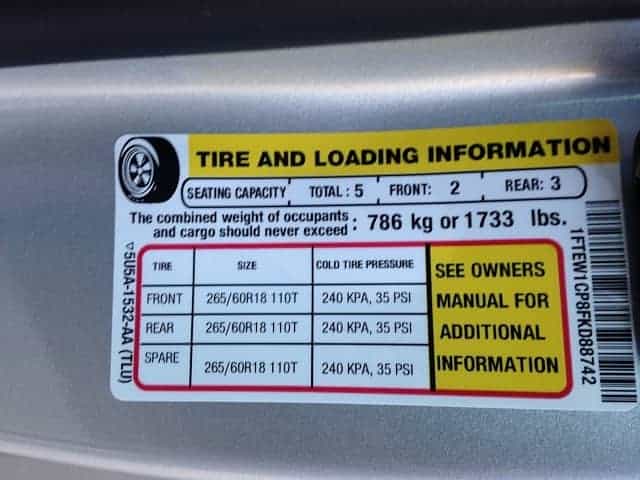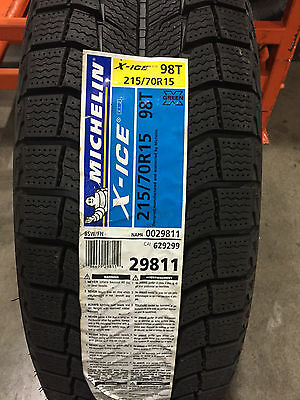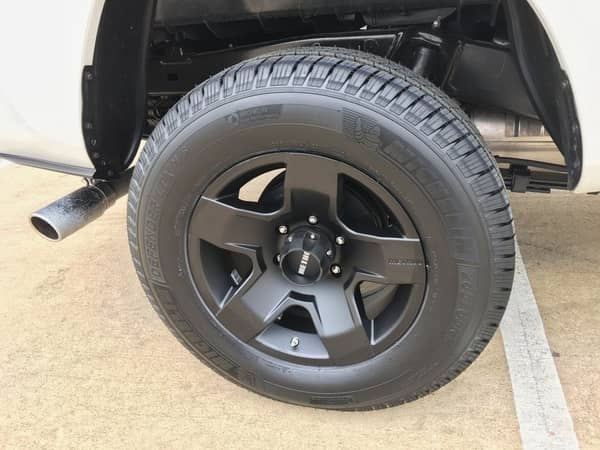There is usually more to buying a truck tire than there is with buying a car tire. Anyone who drives a truck understands that it is not just a vehicle, it is a tool. You may use your truck to go off-roading, to haul or tow trailers and boats, or just to drive to work. Depending on how you use your truck determines the tires and wheels you will need.
So, what should you know about your truck wheels and tires? I’ve curated the information below to help you understand, and choose the correct wheels and tires for your truck.
- Can I replace my Light Truck (LT) Tires with Passenger (P-Metric) Tires?
- Are Stock Tires Ok?
- How to Choose the Right Tires for Your Truck
- When to Buy New Tires for Your Truck
- How to Check the Wear of Your Tires
- How to Help Your Tires Live Longer
- How to Read Tire Ratings
- How to Choose the Right Wheels for Your Truck
Making sure that you have the right wheel and tire for your truck, understanding how to read a tire, and how to take care of a tire, is knowledge that will save you money. Below, I have provided detailed information to help you get the most out of our truck.
Can I Replace my Light Truck (LT) Tires with Passenger (P-Metric) Tires?

The first thing you should do if you are thinking about buying new tires for your truck is to check whether or not the decal on your truck recommends LT tires. If you aren’t sure where the decal is, just check the driver’s side door or the glove box.
Since LT tires are made with thicker rubber, they are more durable and can carry a heavier load than passenger tires, but they come at an extra cost. On the flipside, passenger tires are more affordable and might give your truck a smoother ride, but they won’t be able to carry heavy loads like LT tires.
Your choice depends on how you use your truck. Do you go off-roading? Do you use it to haul heavy equipment? Then go for the LT tires. But if you are just using your truck as a commuter vehicle, and to occasionally help a friend move a couch, you might want to save some cash by going with the passenger tires.

If you decide to go with passenger tires, just give the vehicle manufacturer or a call, or check their website, to make sure that your truck can handle passenger tires.
Also, think ahead. Maybe you aren’t using your truck for hauling heavy loads or off-roading now, but you may want to in the future. If that is the case, it would be better to just invest in LT tires.
Are Stock Tires Ok?
The answer to this depends on what you are going to be using your truck for. Stock tires are usually fine if you are just going to be using your truck as a commuter car, helping your friend move a couch once and a while, and your “off-roading” is kept to well packed dirt roads.
However, if you live in an area with severe winters, you use your truck to haul or tow heavy loads, or you like to go off-roading (real off-roading), then you are going to want to look at different types of tires.
There are plenty of truck models that will come with stock passenger tires. If this is the case, and you plan on using your truck for the activities listed above, then you should definitely consider choosing new tires for your truck.
How To Choose the Right Tires for Your Truck
Buying tires for your truck is a lot like buying boots for your feet, what you need depends on who you are.
Do you live in Southern California or Michigan? What weather conditions are you usually driving in? What are the roads like? What kind of driver are you? What do you use your car for? Think about all these questions now, before moving on to the different types of tires.
All Season Tires
If you are driving mostly on-road and you want versatility when it comes to weather, then these may be the tires for your truck. Like the name says, they are built for all seasons, rain or shine or slush or snow.
But just know that if your living in Alaska, or a place where the snow gets deep and heavy, you are going to want to take a look at winter tires.
Another thing to keep in mind is that all season tires might have towing and hauling limitations. So, if you use your truck to tow around trailers, boats, jet skis, or you are planning on hauling heavy stuff in the bed, make sure to check out the towing and hauling capacity.
Mud Terrain (MT) Tires
With exceptionally deep tread and muscular shoulder blocks, these tires are meant to take your truck off-road. Snow, water, and mud are channeled away from the tire by the tread void (the gaps between tread blocks), which will also give the tire enhanced flexibility for better traction and handling.

These are the best tires for those truck drivers who spend most of the time off road.
“Though they’re sometimes used on-road by everyday drivers, mud-terrain tires are engineered to accumulate the majority of miles in challenging off-road environments. Therefore, the ideal mud-terrain tire user spends up to 80% of the time off-road, and about 20% on-road.”
From tirebuyer.com.
So, what’s the trade off? You will be spending more cash on gas for one, and you can say goodbye to quiet rides. Also, that deep tread that makes them so great, also is prone to uneven wear.
An MT tires is going to cost more than an all-season tire and it is more rugged. But if you plan on going out to the desert, into the mountains, and off the roads, an all season just won’t do it. Trucks are meant to be rugged and get dirty, right?
All Terrain Tires
You can identify these tries because they are marked with a stamp of a snowflake inside a three-peaked mountain.
Like mud terrain tires, all terrain tires are for the more adventurous. If you have these tires, combined with a 4×4 your truck will be able to handle almost any weather condition, even heavy snow.
They are also tough and durable, so they stand up well to rugged roads that are littered with unfilled potholes.
Unfortunately, like mud terrain tires, they have poor fuel economy and are noisier than all season tires.
Summer
If you live in a sunny region with a lot of hot asphalt, then these tires could help save you some money on replacements because they stand up better to the wear of the sun and heat.
Despite being called summer tires, they do actually hold up well in wet conditions. Their tread patterns also give them an advantage in breaking, cornering, and overall responsiveness. Your likely to see them on high-performance vehicles, and they may not be ideal for trucks.
But who knows? Maybe you like drifting.
High Performance (HP) and Ultra-High Performance (UHP)
With a shallow tread depth and stickier rubber, you won’t be taking your truck off-road with these tires. They do, however, grip the road extremely well and are great for driving at high speeds.
Their lower gas mileage, poor performance in rain and snow, and tendency to wear quickly, make them impractical for the average truck driver. But if you want to go fast and stick to the asphalt, you might want to try them out.
Winter Tires

You might know these as snow tires. You can identify winter tires by the symbol of a snowflake that is stamped onto the tire wall.
Their unique tread pattern and softer rubber are designed to perform well on ice and snow. If you do go with snow tires, it’s recommended that you buy a set of four matching tires. You don’t want to take any risks when driving in winter conditions.
When to Buy New Tires for Your Truck
The NHTSA (National Highway Traffic Safety Association) reports that, according to most tire manufacturers, you should replace your tires every 6 to 10 years.
If you did not buy the tires that are on your truck now you check the manufacture date on your tire. On the tire wall, look for DOT Tire Identification number, or TIN. The last four numbers of your TIN number tell you when the tire was manufactured. The first two numbers tell you the week of the year, the last two tell you the year.
So, if the last four digits of you TIN number are 1215, that means that your tire was manufactured in the twelfth week of 2015.
You shouldn’t wait until to your tires are 6 years are older to start thinking about a new set, being proactive can save you money.
Your truck tires are like shoes. Some people wear their shoes out quickly because they are runners, or hikers, or they have a peculiar gait. Depending on the way you drive and conditions of the area you live in, your tires will wear out at a different rate.
A warm climate, long exposure to sunlight, brake slamming, drifting, aggressive driving, improper alignment, improper storage, and poor maintenance will all accelerate the rate at which your tires wear out.
How to Check the Wear of Your Tires
If you have never done this, you should. And if you plan on buying used tires (which you shouldn’t, but maybe you are short on cash) this will also come in handy. You don’t want to wait until your tire bursts to find out that your tires needed to be changed.
Check the tread depth. The channels, or grooves, in your will that help send water away from the tire is your tread.
All you are going to need is a quarter and a penny. Fish some out of your cup holder and don’t forget to grab a towel, your hands might get tire residue on them. Once you have everything you need, kneel down near the tire you want to check and stick the quarter, head first, into the tread.
It’s 4/32 of an inch from the edge of a quarter to Washington’s head, so if the top of his head is covered by the tire, then your tread is in good shape. However, if you can clearly see his head, you might want to start looking for a new tire, but the situation isn’t extreme.
After the quarter test, you should do the same with a penny, again, head down. The penny is about 2/32 of an inch. If Abe’s head is clearly visible then that means your tire tread is very low and that you should go buy a new tire as soon as possible.
How to Help Your Tires Live Longer
Proper tire care is the most effective way to increase the longevity of your truck tires. The longer they last, the less tires you have to buy in the future. This is especially true with truck tires, that are usually thrashed around a lot more than car tires.
Check Your Air Pressure Regularly
You can save 11 cents per gallon on fuel, according to the NHTSA, just by making sure that your tires are properly inflated, and it can also increase the longevity of your tires by almost 5,000 miles.
Make Sure Your Tires Are Balanced
Another great way to increase the life of your tires is to balance them. When your tires are not balanced correctly, they begin to wear unevenly, and your driving experience becomes less smooth. This uneven wear can even cause a blowout.
You can sense when a front tire is out of balance because you may start to feel a slight vibration in the steering wheel, and for the back tires you will feel a vibration on the seat floor.
Getting your tires balances is pretty common, and it will probably run you around $40.
Make Sure Your Tires Are Aligned
Your vehicles entire suspension system is affected by the alignment of your car’s tires, which is particularly important for off-roaders.
An easy alignment test is to momentarily release your steering wheel while you are driving, and see if your car veers to the left or right. Obviously, this can be dangerous, especially on the freeway, and should only be done on a wide empty road. However, it is best just to take it into the shop.
You can also check the tread. If the tread wear varies from tire to tire, that may mean that your alignment is off. Since the wheels are at different angles, over time they wear in different spots.
Getting an alignment will cost about $98 on average, but the money it will save you in the future in worth it.
Rotation
Every time you get your oil changed, around every 5,000 to 6,000 miles, you should also get your tires rotated. Getting these two services will save you an extra trip to the mechanic.
Also, check the warranty of your truck. Sometimes you need to get regular rotations to keep your truck under warranty.
Oil changes and tire rotations are a great time to check up on everything else. Talk to your mechanic about the treadwear, tire pressure and alignment.
How to Read Tire Ratings
There is a lot of information stamped on the sidewall of your tire, but if you can’t read it then it might as well not be there at all. This information will tell you things like the tire’s temperature grade, information on traction, speed ratings, and more.
Light Truck or Passenger?
In this section we will cover both LT (light truck) tires and passenger vehicle, which are indicated on the tire wall with ‘LT’ or ‘P’ respectively. Note that LT tires are usually used on three-quarter-ton to one-ton pick-up trucks.
And, in case you didn’t read the previous sections, you can use passenger tires on light trucks depending on the circumstances.
Check the Sidewall Width
After the ‘LT’ or ‘P’ stamped onto your tire wall, there will be three numbers that give you the tire width in millimeters. There may be a slash after the three numbers, with two more numbers after it. These two numbers indication the tire’s height/width ratio.
For example, if your tire wall read P215/75R15, the width of the tire is 215 millimeters, and its aspect ratio is 75, meaning that the tires height is equal to 75% of the tire’s width. A greater aspect ratio translates into a larger tire sidewall.
Check Tire Construction
After the aspect ratio you will find a letter. In our example above, P215/75R15, that would be the ‘R’. It could also be a ‘B’ or a ‘D’.
The R stands for ‘radially’. So, if your tire wall has an ‘R’, that indicated that the internal cords run radially, or at a 90-degree angle to the centerline of the tire.
‘B’ indicates belted tires. This means that on the inside of the tires there is a mix of bias-ply (which has a diagonal design) and belts. This is rare in passenger vehicle tires, but you may find it in off-road tires.
Finally, we have ‘D’ which indicated bias-ply tires, meaning that the internal cords cross at a 30-45-degree angle.
The most common type of tire construction these days is radial(R).
Check Load Index
After all of the size information you will find another two numbers which indicate the load index of the tire. So, going back to our original example of P215/75R15, the load index is actually not shown.
With a load index it would look like this: P215/75R15 85H. The number 85 indicates the load index. Goodyear has a detailed chart which translates loads index numbers. Each number indicates how much weight the tire can hold. For example, 85 means 1135 lbs. Most passenger vehicles have a load index of 75-100.
For light truck tires, there are two load indexes on the tire sidewall. So rather than 85H, a light truck tire will have two numbers, like 120/116. Looking at the Goodyear chart, a load index of 120 means the load capacity for a single tire is 3,086 pounds.
However, the 116 has a load index of 2,756 pounds. This second number indicates the load capacity for two tires.
But why would the load capacity for two tries be lower than the load capacity for one tire?
Because if you have a blow out, or something should happen to one tire, the other tire must be able to continue to haul the weight that both tires had been hauling.
Returning to our example of P215/75R15 85H, this ‘H’ indicates the tire’s speed rating. So, for ‘H’, the speed rating is 130 miles per hour, which is a typical speed rating for sports sedans and coupes.
A typical speed rating for H.D. light truck tires would be 106 miles per hour, which is indicated by the letter ‘R’, while the typical speed rating for off-road and light truck tires is 75 miles per hour, indicated by the letter ‘L’.
Since it’s always good to have a spare, the typical temporary spare tire has a tire rating of 81 miles per hour, indicated by the letter ‘M’.
Tires are tested at increasing speed in a laboratory in order to determine its speed rating.
It’s important to understand that if you have a worn or damaged tire, or your tire is deflated or overloaded, the speed rating will not necessarily be safe.
Check Load Range/Ply Rating
Load rating indicates how much of a load a tire can carry at a designated tire pressure. These indicators vary depending on if you are using light truck tires or passenger tires. In this section we will cover both types of tires, in case you are considering putting passenger vehicle tires on your truck.
Let’s cover passenger tires first.
Most passenger tires won’t have anything branded on their sidewalls indicating the load range because they are manufactured at a standard range, or they may have an SL (standard load).
For extra load passenger tires, you will find an ‘XL’ on the tire which indicates that 41 psi is the maximum load pressure, while ‘LL’ indicates light load and has a maximum load pressure of 35 psi.
On to light trucks.
Light truck load ranges are indicated by letters rather than numbers. Ply rating uses numbers, but follows the same gradation as load ranges, so each load range will have a corresponding ply rating. This is because, before manufacturers began using load ranges, they use ply ratings to indicate the number of casing piles. The higher number of casing piles, the stronger the tire.
Below the load ranges are indicated by a letter ‘B-F’, ply ratings by a number ‘4-12’ and maximum load pressure by a number followed by ‘psi’:
- B-4-35psi
- C-6-50psi
- D-8-65psi
- E-10-80psi
- F-12-95psi
It’s best to have a pressure gauge handy in your truck. You can get a cheap one for around $5. You just need to unscrew the valve cap, press the pressure gauge onto the valve stem, and check the number that the needle lands on.
How To Choose the Right Wheels for Your Truck
Before you dive into finding the right wheels for your truck, there are some things that you need to know.
Bolt Pattern
First you need to find out your bolt pattern. You can use an online tool like the one at wheel-size.com to help you out, or you can measure it yourself.

Basically, your bolt pattern is determined by the distance between opposite lugs. Measure from the center of one lug, the center of the opposite lug. Now, count how many lugs the wheel has (4,5,6, or 8).
So, if you have 6 lugs and the distance from lug to lug is 5.5 inches, your bolt pattern would be presented as 6×5.5”.
Why is bolt pattern important?
If you get it wrong, the wheels you buy might not be able to fit to your truck. That means you just wasted your money, and you will have to go back to your old wheels, or buy another set (the right way).
Wheel Size
This size of your wheel affects the smoothness of your ride and the cost of the wheel. Also, wider tires lead to better traction, and the wider the tire, the wider the wheel that supports it must be.
So, if you like to take your truck off-road, you will want a larger wheel that supports wider tires.
In addition, more sidewall cushion is great if you are going off-road because the extra space between the wheel and tire create a kind of second suspension system when the tire has a little less air in it, allowing the tire to form better to the dynamic off-road terrain.
If you aren’t planning on too much off-roading, but you are going to be hauling, then you can go with a larger wheel-diameter.
If you’re thinking of different ways to accessorize your truck or make it more functional, consider checking out my recommended accessories page. I spent a good amount of time picking out mods that can be useful for most pickup trucks.

